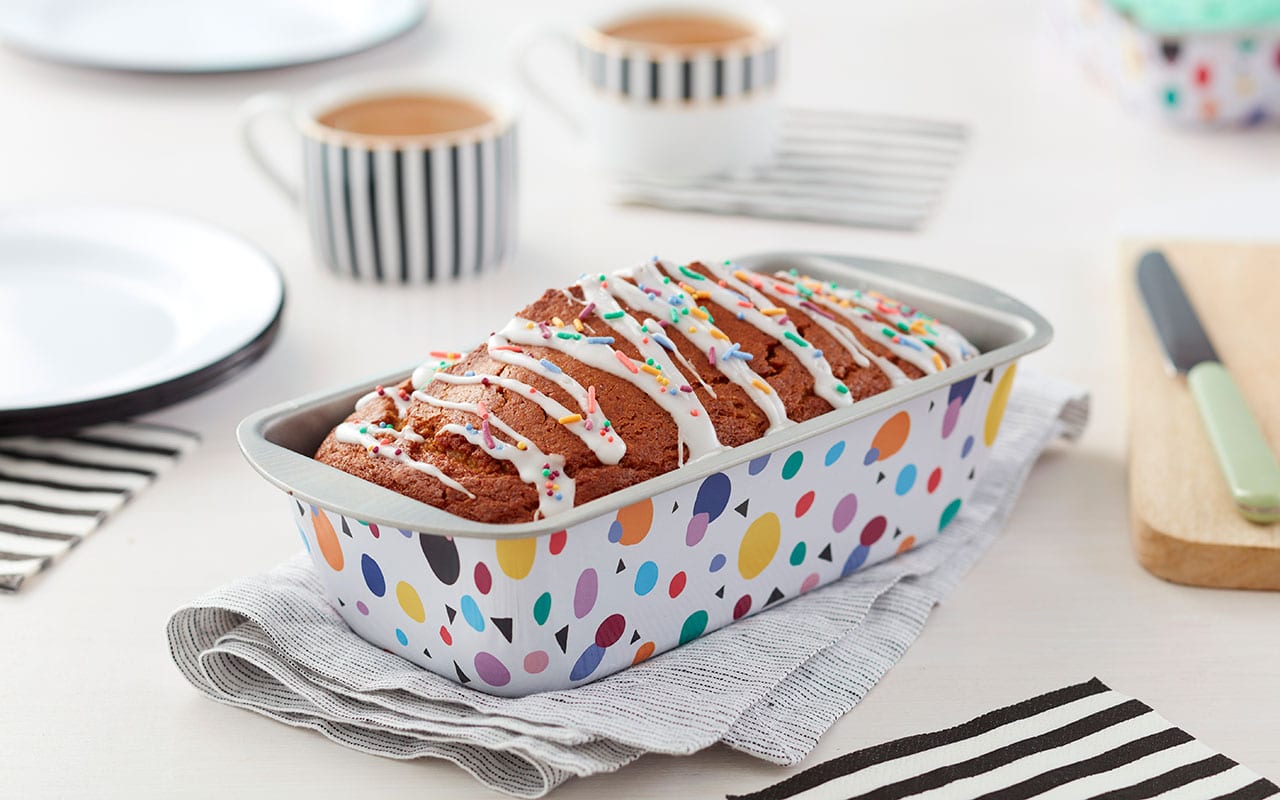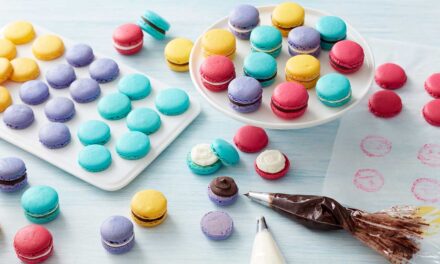Wondering how to clean a burnt pan? You’ve come to the right place! We’ll walk you through how to best care for nonstick, aluminum, and stainless-steel and silicone pans, as well as helpful tips for improving the longevity of your bakeware.
Whether you’re making appetizers, cookies, brownies or cupcakes, there’s nothing worse than burning your food…except maybe having to clean a burnt pan!
But never fear – we’re here to show you how to clean your bakeware, whether it’s nonstick, aluminum or something in between. From simple hand washing to helpful tips on how to remove stubborn drips and crumbs, this guide will help you extend the life of your bakeware.
How to Clean Nonstick Pans

General cleaning: Nonstick bakeware is dishwasher safe; however, we suggest hand washing your pans and cookie sheets in warm, soapy water. Make sure pans are completely dry before storing.
If food is stuck on your pan: For stubborn residue, let your pans soak in warm, soapy water for a few minutes, then try removing the food with a soft sponge or microfiber cloth. Avoid using abrasive pads or stainless-steel scrubbers, as they can scratch your pan and cause rusting.
How to clean a burnt nonstick pan: If you have burnt food on your nonstick pan, the best course of action is to think fast! The nonstick coating on most pans prevents foods from adhering, so washing your pans quickly might help remove debris.
How to Clean Aluminum Pans

General cleaning: Aluminum pans, like shaped cake pans and some cookie sheets, are not coated with a nonstick coating; therefore, they’re more susceptible to sticking and burning.
If you’re using an aluminum pan, make sure you spray it first with a nonstick cooking spray, or line it with parchment paper or a silicone mat.
For general cleaning of aluminum pans, we suggest hand washing them. You can put them in the dishwasher; however, the dishwashing detergent can discolor your bakeware. It will still be usable, but not as attractive.
If food is stuck on your pan: For stubborn bits and burns, a little elbow grease is your best bet! Some warm water, mild dish soap and a nylon scrubbing sponge are often all you need to clean your aluminum pans.
How to clean a burnt aluminum pan: For stuck-on foods that just won’t budge, try soaking your pan in some vinegar. Wearing protective gloves, cover the stain with white distilled vinegar. Place the pan on the stove and let it boil for 10 minutes or so.
Dispose of the vinegar and let the pan cool for 1 to 2 minutes. Scrub the stain with a sponge or soft cloth. Rise with dish soap and water, then dry thoroughly.
Avoid cleaning with bleach or oven cleaner, both of which can eat into the aluminum and destroy your pans.
How to Clean Stainless Steel Pans

General cleaning: Much like its nonstick and aluminum cousins, stainless steel should be hand-washed to remove general stains and grime. These pans are dishwasher safe, but hand-washing them ensures they will last longer.
If cared for correctly, these pans can last you years! So take care in washing and caring for stainless steel.
If food is stuck on your pan: You can loosen any food on your stainless steel pan by deglazing it with water or alcohol.
Add a little water to your hot pan and let it sit for a few minutes while the pan cools down, then wash with soap and a sponge. Avoid fully submerging a hot pan in cold water, as this can cause it to warp.
How to clean burnt stainless steel pans: Unlike nonstick and aluminum, stainless steel can stand up to abrasive cleaners, if needed. Just make sure they are safe for stainless steel pans.
A plain baking soda scrub can also help remove caked-on food.
How to Clean Silicone Bakeware
General cleaning: The great thing about silicone is that it’s super easy to clean! Most silicone pans are dishwasher safe, so feel free to place them in the dishwasher for quick and easy cleaning. These pans and molds can also be hand washed with warm, soapy water.
Make sure you use a soft sponge or non-abrasive scrubbing brush to wash your silicone.
If food is stuck on your pan: If you have little bits of food stuck on your pan or you notice that your silicone molds have developed a sticky film (this happens overtime as grease and oil build up on the silicone), you can restore them with a little baking soda.
To remove the sticky residue from your silicone, cover the surface of the bakeware with baking soda. With a damp sponge, scrub the baking soda into the surface of the bakeware, creating a paste. Let the bakeware sit for a few hours, then rinse clean with warm water and soap. You can repeat the process if needed without damaging your silicone bakeware.
How to clean a burnt silicone pan: If you have stubborn burnt bits on your silicone mats or molds, you can let them sit overnight in warm, soapy water. You can also use a plastic scraper or mesh pad to remove any burnt spill marks.
More Tips for How to Clean Burnt Pans
How to clean pans with baking soda and vinegar: This one is great for burnt pots and pans as well as bakeware! Simply sprinkle your pot or pan with about a tablespoon of baking soda. Add a cup of water and 1/2 cup white distilled vinegar, then boil the mixture for about 10 minutes.
Once cooled, the stain should wipe away.
- Works on:
- Nonstick pans
- Aluminum pans
How to clean burnt pans with dryer sheets: This hack sounds weird, but it’s been proven to work! Place a dryer sheet in your burnt pan, then add enough hot water to cover the stain. Let it sit for 15 to 20 minutes for lighter burns or overnight for super stubborn stains.
Remove the dryer sheet and wash your pan as usual. The stain should come off much easier!
- Works on:
- Nonstick pans
- Aluminum pans
More Bakeware Use and Care Tips
- Prior to first use, remove the labels, stickers and any sticky adhesive from your new bakeware. Wash it in warm, soapy water and rinse well.
- Normal wear and tear is common with bakeware. Some recipes may stain your pans, but that shouldn’t affect their performance. However, if your pan has deep scratches or rust, it’s time to replace them.
- Avoid using sharp knives on nonstick pans.
- Line pans with parchment paper or silicone baking mats, especially if you’re baking something sticky.
- For long-lasting bakeware, we suggest hand washing it, even if it’s dishwasher safe. Let your pans cool completely before washing (washing hot pans may cause them to warp).
- Make sure pans are completely dry before storing.
Want to learn more about Wilton bakeware? Check out the pan that best works for you by referencing our Bakeware Comparison Chart. Compare bakeware lines, prices, materials, best uses and more.






